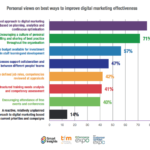dropshipping has been a popular online business model in recent years, allowing entrepreneurs to sell products without holding any inventory. With the rise of e-commerce, dropshipping has become a lucrative way to start a successful online store. In this comprehensive guide, we’ll explore the concept of dropshipping, the advantages and disadvantages, and how to set up a successful dropshipping store on Shopify.
What is Dropshipping?
Dropshipping is a retail fulfillment method where a store does not keep the products it sells in stock. Instead, the store purchases the products from a third-party supplier and has them ship directly to the customer. This means that the store owner does not have to worry about inventory storage, packaging, and shipping, as these responsibilities are handled by the supplier.
The Concept of Dropshipping
Dropshipping involves several key players:
1. Customer: The person who purchases a product from an online store.
2. Store Owner: The entrepreneur who runs the online store and decides which products to sell.
3. Supplier: The company that provides the products to the store owner.
4. Fulfillment Center: The warehouse where the products are stored and shipped out to customers.
How Dropshipping Works
Here’s a step-by-step process of how dropshipping works:
1. A customer places an order on the store owner’s website.
2. The store owner purchases the product from the supplier at a discounted price.
3. The supplier ships the product directly to the customer.
4. The store owner pays the supplier for the product.
5. The store owner earns a profit margin by charging the customer a higher price than the cost of the product.
Advantages of Dropshipping
Dropshipping offers several benefits to entrepreneurs:
1. Low Startup Costs: Starting a dropshipping business requires little to no initial investment in inventory.
2. Unlimited Product Range: With dropshipping, you can offer a wide range of products to your customers without having to hold inventory.
3. Flexibility: Dropshipping allows you to operate your business from anywhere, as long as you have an internet connection.
4. Scalability: Dropshipping makes it easy to scale your business by increasing or decreasing your product offerings.
5. Reduced Risk: By not holding inventory, you avoid the risk of inventory becoming outdated or unsold.
Disadvantages of Dropshipping
While dropshipping has many advantages, there are also some disadvantages:
1. Lower Profit Margins: With dropshipping, you have limited control over the price of the product, which means lower profit margins.
2. Quality Control Issues: Since you’re not physically holding the product, you may have limited control over product quality.
3. Shipping Delays: There may be delays in shipping products from the supplier, which can affect customer satisfaction.
Setting Up a Dropshipping Store on Shopify
Setting up a dropshipping store on Shopify is relatively easy. Here are the steps:
1. Sign up for a Shopify account: Create a Shopify account and set up your store.
2. Choose a dropshipping supplier: Research and choose a dropshipping supplier that offers products that align with your niche.
3. Create a product catalog: Create a product catalog on your Shopify store by importing products from the supplier.
4. Set up payment and shipping options: Set up payment and shipping options on your store to allow customers to checkout easily.
5. Customize your store: Customize your store’s design and layout to make it unique and attractive to customers.
Tips for Choosing a Dropshipping Supplier
Choosing the right dropshipping supplier is crucial to the success of your store. Here are some tips to keep in mind:
1. Research the supplier’s reputation: Research the supplier’s reputation online to ensure they are reliable and trustworthy.
2. Check the supplier’s product range: Check the supplier’s product range to ensure they offer products that align with your niche.
3. Ask about shipping and fulfillment: Ask about shipping and fulfillment to ensure the supplier offers reliable and timely shipping.
4. Check for wholesale pricing: Check if the supplier offers wholesale pricing and what the markup is.
Marketing Your Dropshipping Store
Marketing your dropshipping store is crucial to driving traffic and sales. Here are some marketing strategies to consider:
1. Social Media Marketing: Use social media platforms like Facebook, Instagram, and Twitter to promote your store.
2. Influencer Marketing: Partner with influencers in your niche to promote your products.
3. Search Engine Optimization (SEO): Optimize your website for search engines to improve visibility and drive organic traffic.
4. Email Marketing: Build an email list and send regular newsletters to your customers and subscribers.
5. Paid Advertising: Use paid advertising platforms like Google Ads and Facebook Ads to drive targeted traffic to your store.
Common Mistakes to Avoid
Here are some common mistakes to avoid when starting a dropshipping store:
1. Not researching suppliers: Failing to research the supplier’s reputation and product range can lead to inventory issues and low-quality products.
2. Not optimizing product listings: Not optimizing product listings with high-quality images, descriptions, and pricing can lead to poor conversions.
3. Not providing good customer service: Not providing good customer service can lead to negative reviews and a loss of sales.
4. Not tracking analytics: Not tracking analytics can make it difficult to identify areas for improvement and optimize your store’s performance.
Conclusion
Dropshipping on Shopify can be a lucrative way to start a successful online store. By understanding the concept of dropshipping, choosing the right supplier, marketing your store, and avoiding common mistakes, you can set up a successful dropshipping business. Remember to focus on providing good customer service, optimizing your store’s performance, and adapting to changes in the market to ensure long-term success.
FAQs
Q: What is the best way to start a dropshipping business?
A: The best way to start a dropshipping business is to create a Shopify store, choose a dropshipping supplier, and import products into your store.
Q: How do I find a good dropshipping supplier?
A: You can find a good dropshipping supplier by researching online, checking for reviews and ratings, and contacting suppliers directly.
Q: What are some popular dropshipping niches?
A: Popular dropshipping niches include fashion, beauty, electronics, and home goods.
Q: How do I optimize my product listings?
A: You can optimize your product listings by using high-quality images, writing detailed descriptions, and setting competitive pricing.
Q: What are some common mistakes to avoid in dropshipping?
A: Common mistakes to avoid in dropshipping include not researching suppliers, not optimizing product listings, not providing good customer service, and not tracking analytics.
Q: Can I sell dropshipped products in a physical store?
A: Yes, you can sell dropshipped products in a physical store, but you’ll need to arrange for storage and shipping of products separately.
Q: How do I track my dropshipping store’s performance?
A: You can track your dropshipping store’s performance by using Shopify’s built-in analytics, Google Analytics, and other third-party apps.









